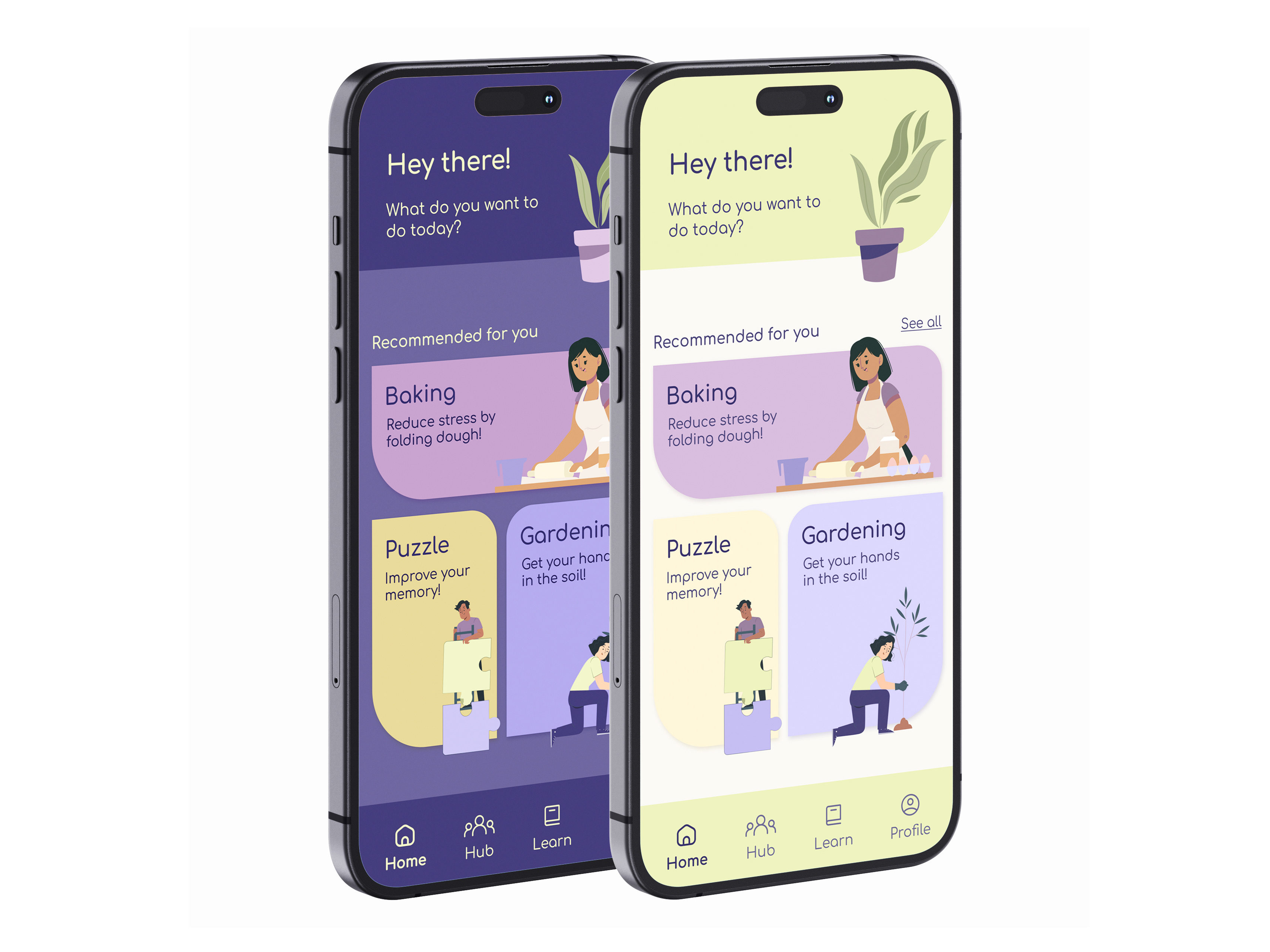case study:
glooma
TIME ROLE
16 months UX Research
Wireframe
Mobile UI Design
Prototype
Breast cancer remains one of the most pressing health challenges for women worldwide, with early detection being critical for successful treatment. Traditional self-exams, while important, can often be inconsistent or overlooked.
Homepage Glooma
INTRODUCTION
SenseGlove is a revolutionary medical device that empowers women to take control of their breast health. Portable, user-friendly and connected to a mobile app, it complements traditional self-exams with enhanced accuracy and guidance in monitoring breast changes.
I joined this project to design a mobile app that seamlessly integrates with the glove. My goal was to create a functional, user-centered app enabling women to conduct self-exams, store data and track their breast health with a built-in calendar. This was actually my first voluntary project as a UX/UI designer and my first experience after changing my career!
BUSINESS COMPETITIVE ANALYSIS
I explored several apps focused on breast cancer detection and support. They provide clean, user-friendly designs that prioritize clarity and ease of use. They guide users through proper self-exam techniques, ensuring the correct process is followed. The apps include calendars to track self-exams, appointments and provide reminders for regular checks. They also allow users to view results clearly, highlighting areas where changes have been detected. Additionally, the apps focus on gathering important user information to personalize the experience and improve early detection.
OWise Breast Cancer Support, MORE THAN PINK Walk & Dotplot
USER PERSONA
PROBLEM STATEMENT
& HOW MIGHT WE
Women need to regularly perform breast self-exams and take proactive care of their health, as early detection of breast cancer increases the chances of successful treatment.
How Might We empower women perform more self-exams, monitor changes, and stay proactive about their breast health?
LOW-FIDELITY & MID-FIDELITY
Moving on to the process of creating low-fidelity and mid-fidelity designs, Glooma had already outlined the core features they wanted to include: profile creation, a tutorial on how to use the glove, a calendar for previous readings and a chat feature. I developed wireframes to visualize the flow and identify areas where the user path could be improved. For instance, questions arose such as: "If someone doesn't schedule their next reading, will there be a notification or reminder to book it?" or "How many readings should we store for easy access?" This iterative process allowed us to address these questions and many others, ensuring the app's flow was intuitive, seamless and user-friendly. Additionally, these wireframes served as a collaborative tool for aligning the team on functionality and user needs.
Mid-fidelity Wireframes
BRAND ATTRIBUTES
Glooma already had its branding and color palette established, which provided a strong foundation for the app's design. My primary focus was on creating a smooth and user-friendly experience that would resonate with users. To achieve this, I aimed for a modern aesthetic that balanced simplicity with functionality, avoiding an overly crowded interface. Additionally, I incorporated playful design elements to infuse a sense of friendliness and comfort, ensuring that the app felt approachable and engaging for its users.
Brand Attributes for Glooma
HIGH-FIDELITY
With the analysis from mid-fidelity wireframes and the brand attributes in mind, I moved on to creating high-fidelity designs. After logging in, users are prompted to fill out a questionnaire about their lifestyle and health. To enhance usability, I decided to divide the questionnaire into groups, allowing users the flexibility to complete it immediately or save sections to fill out later. On the homepage, users can see information about their next reading and access the three main features of the app. The app includes two calendars: a primary one that marks upcoming readings and an optional secondary calendar for tracking menstruation.
On the test page, users are provided with clear instructions on how to perform the test. Following the test, the app displays results highlighting changes in different parts of the breast, as well as a history of changes over the past months.
My goal was to create an app that is well-organized, easy to navigate, visually appealing and motivating for users to engage with regularly.
High-fidelity Wireframes
NEXT STEPS
In the next steps, I would integrate the two calendars, allowing users to find all the information in a single, unified calendar. I would also like to enhance the process of conducting the test and displaying the results. However, to achieve this, I would make additional testing and analysis to improve the clarity and overall experience of interpreting the presented data.


